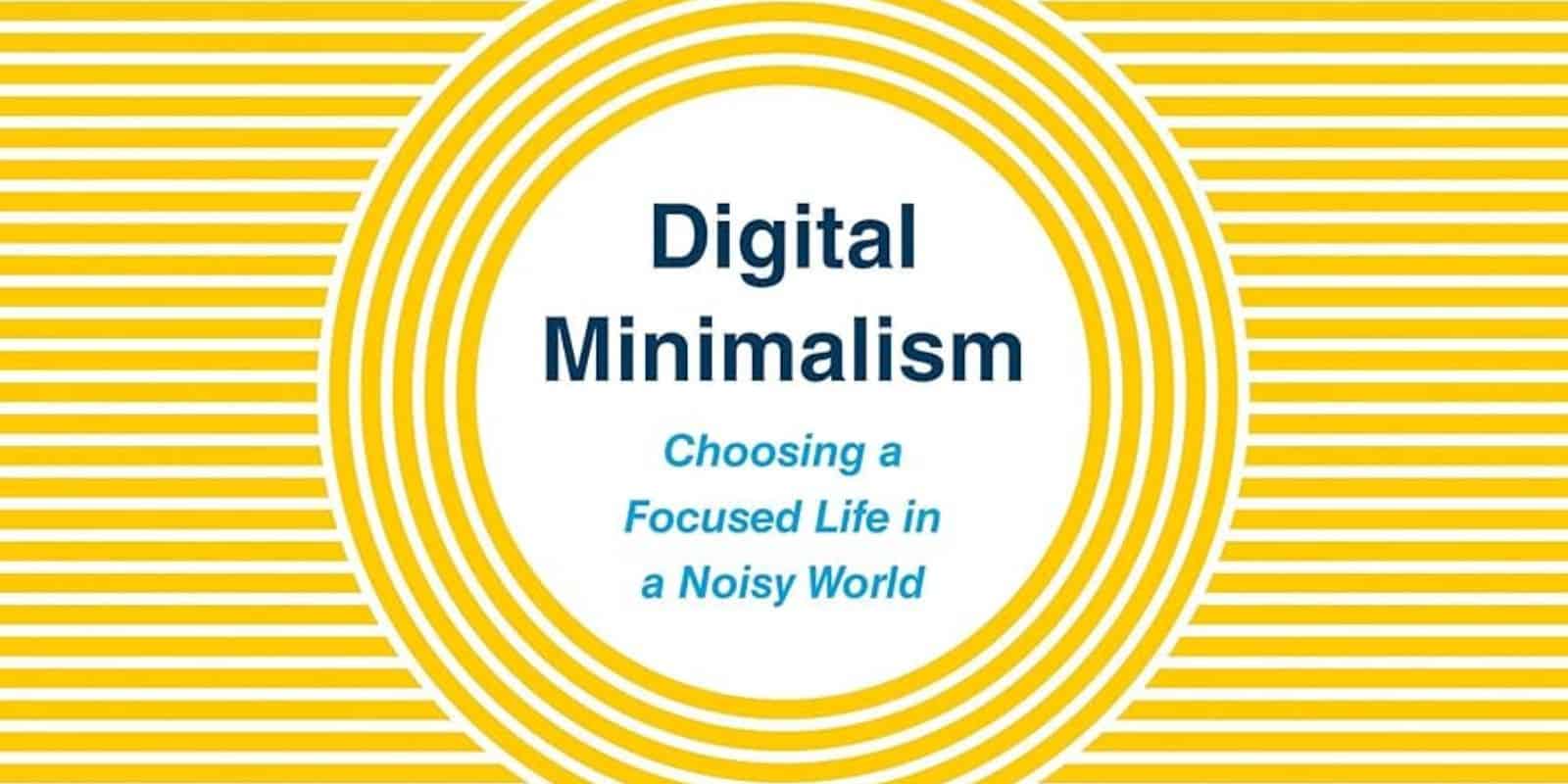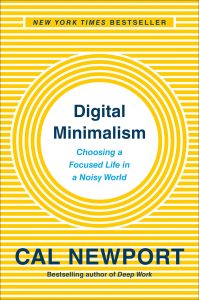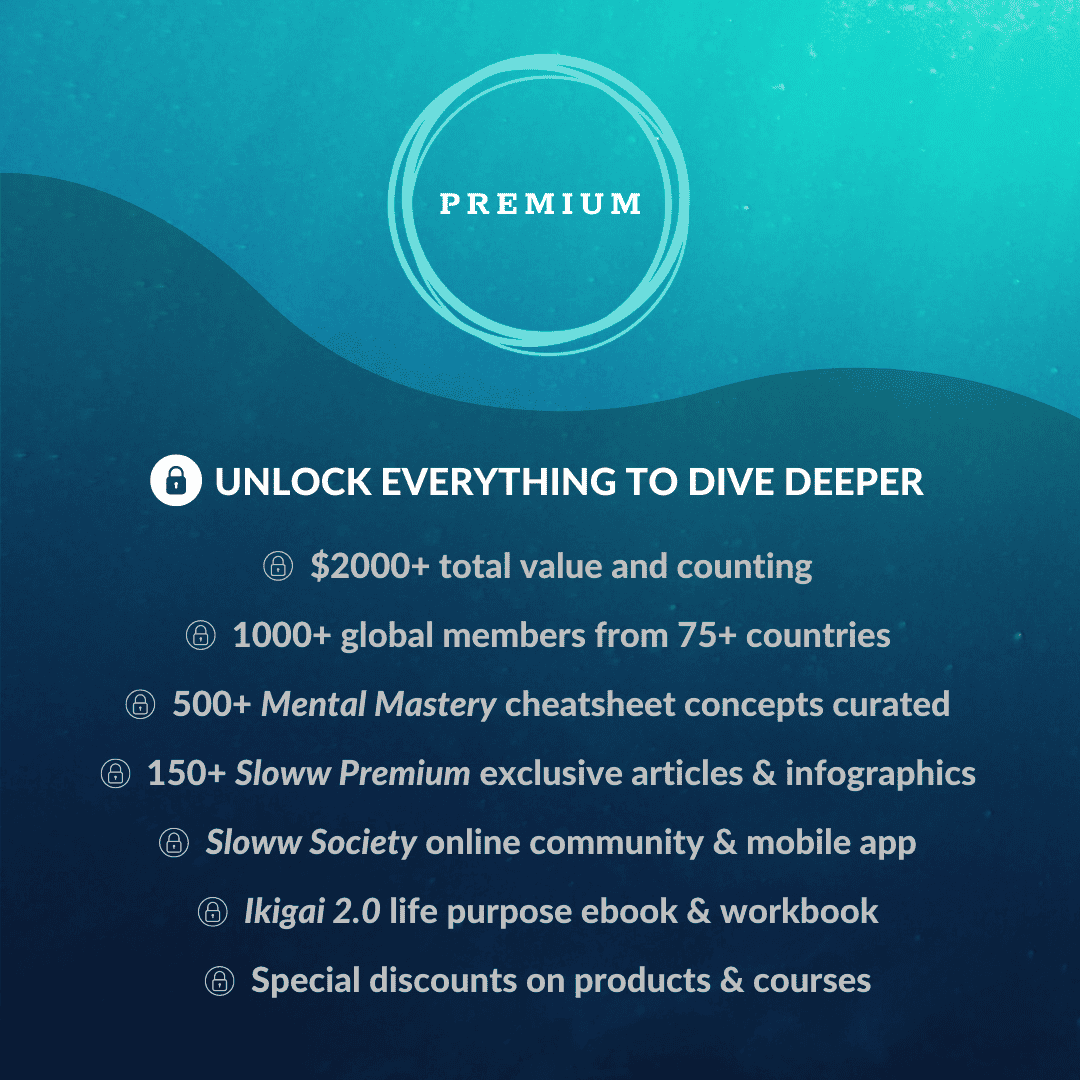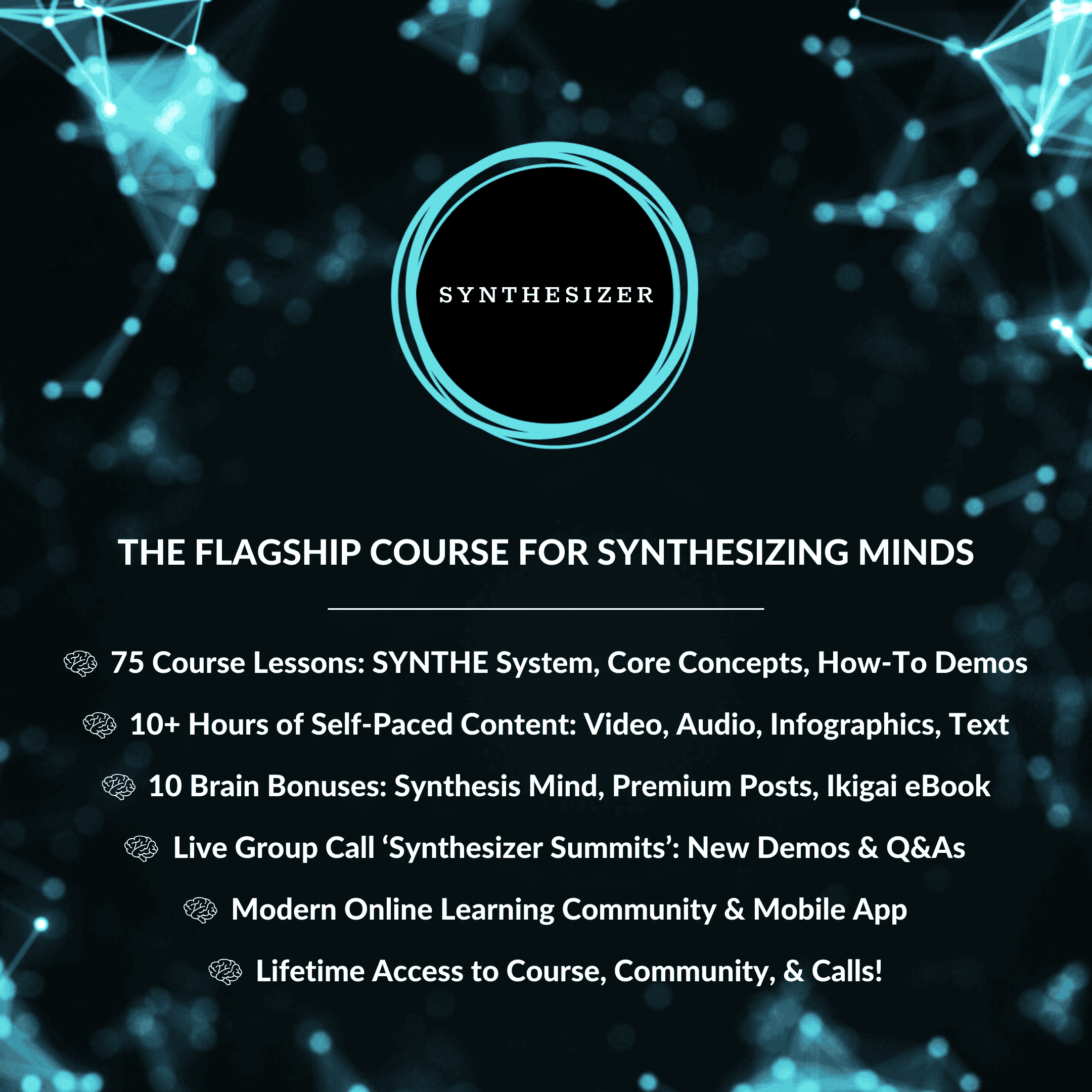This is a book summary of Digital Minimalism: Choosing a Focused Life in a Noisy World by Cal Newport (Amazon).
Quick Housekeeping:
- All content in “quotation marks” is from the author (otherwise it’s minimally paraphrased).
- All content is organized into my own themes (not the author’s chapters).
- Emphasis has been added in bold for readability/skimmability.
Book Summary Contents:

A Philosophy of Technology: Digital Minimalism by Cal Newport (Book Summary)
About the book Digital Minimalism
“What you need is a full-fledged philosophy of technology use, rooted in your deep values, that provides clear answers to the questions of what tools you should use and how you should use them and, equally important, enables you to confidently ignore everything else.”
- “I call it digital minimalism, and it applies the belief that less can be more to our relationship with digital tools.”
- “This idea is not new. Long before Henry David Thoreau exclaimed ‘simplicity, simplicity, simplicity,’ Marcus Aurelius asked: ‘You see how few things you have to do to live a satisfying and reverent life?’ Digital minimalism simply adapts this classical insight to the role of technology in our modern lives.”
- “Because digital minimalists spend so much less time connected than their peers, it’s easy to think of their lifestyle as extreme, but the minimalists would argue that this perception is backward: what’s extreme is how much time everyone else spends staring at their screens.”
What is Digital Minimalism?
“Digital minimalism is a philosophy of technology use in which you focus your online time on a small number of carefully selected and optimized activities that strongly support things you value, and then happily miss out on everything else.”
A Philosophy of Technology Use:
“What all of us who struggle with these issues need is a philosophy of technology use, something that covers from the ground up which digital tools we allow into our life, for what reasons, and under what constraints.”
- “The best way to fight the tyranny of the digital in your life is to embrace a philosophy of technology use based in your deeply held values.”
- “In my experience, the key to sustained success with this philosophy is accepting that it’s not really about technology, but is instead more about the quality of your life … Digital minimalism is much more than a set of rules, it’s about cultivating a life worth living in our current age of alluring devices.”
- “Digital minimalism definitively does not reject the innovations of the internet age, but instead rejects the way so many people currently engage with these tools.”
Principles of Digital Minimalism:
3 main principles…
- Principle #1: “Clutter is costly. Digital minimalists recognize that cluttering their time and attention with too many devices, apps, and services creates an overall negative cost that can swamp the small benefits that each individual item provides in isolation.”
- Principle #2: “Optimization is important. Digital minimalists believe that deciding a particular technology supports something they value is only the first step. To truly extract its full potential benefit, it’s necessary to think carefully about how they’ll use the technology.”
- Principle #3: “Intentionality is satisfying. Digital minimalists derive significant satisfaction from their general commitment to being more intentional about how they engage with new technologies. This source of satisfaction is independent of the specific decisions they make and is one of the biggest reasons that minimalism tends to be immensely meaningful to its practitioners.”
Digital Minimalists:
“Minimalists don’t mind missing out on small things; what worries them much more is diminishing the large things they already know for sure make a good life good … Digital minimalists see new technologies as tools to be used to support things they deeply value—not as sources of value themselves. They don’t accept the idea that offering some small benefit is justification for allowing an attention-gobbling service into their lives, and are instead interested in applying new technology in highly selective and intentional ways that yield big wins. Just as important: they’re comfortable missing out on everything else.”
- “The so-called digital minimalists who follow this philosophy constantly perform implicit cost-benefit analyses. If a new technology offers little more than a minor diversion or trivial convenience, the minimalist will ignore it. Even when a new technology promises to support something the minimalist values, it must still pass a stricter test: Is this the best way to use technology to support this value? If the answer is no, the minimalist will set to work trying to optimize the tech, or search out a better option.”
- “By working backward from their deep values to their technology choices, digital minimalists transform these innovations from a source of distraction into tools to support a life well lived. By doing so, they break the spell that has made so many people feel like they’re losing control to their screens.”
- “Digital minimalists are also adept at stripping away superfluous features of new technologies to allow them to access functions that matter while avoiding unnecessary distraction.”
Digital Declutter Process
“This process requires you to step away from optional online activities for thirty days. During this period, you’ll wean yourself from the cycles of addiction that many digital tools can instill, and begin to rediscover the analog activities that provide you deeper satisfaction. You’ll take walks, talk to friends in person, engage your community, read books, and stare at the clouds. Most importantly, the declutter gives you the space to refine your understanding of the things you value most. At the end of the thirty days, you will then add back a small number of carefully chosen online activities that you believe will provide massive benefit to these things you value. Going forward, you’ll do your best to make these intentional activities the core of your online life—leaving behind most of the other distracting behaviors that used to fragment your time and snare your attention. The declutter acts as a jarring reset: you come into the process a frazzled maximalist and leave an intentional minimalist.”
Digital Declutter Overview:
In a nutshell…
- “Put aside a thirty-day period during which you will take a break from optional technologies in your life.”
- “During this thirty-day break, explore and rediscover activities and behaviors that you find satisfying and meaningful.”
- “At the end of the break, reintroduce optional technologies into your life, starting from a blank slate. For each technology you reintroduce, determine what value it serves in your life and how specifically you will use it so as to maximize this value.”
Step 1: Define Your Technology Rules
“Take a thirty-day break from any of the technologies that you deem ‘optional’—meaning that you can step away from them without creating harm or major problems in either your professional or personal life. In some cases, you’ll abstain from using the optional technology altogether, while in other cases you might specify a set of operating procedures that dictate exactly when and how you use the technology during the process.”
- “During the thirty days of your digital declutter, you’re supposed to take a break from ‘optional technologies’ in your life. The first step of the declutter process, therefore, is to define which technologies fall into this ‘optional’ category.”
- “Once you’ve identified the class of technologies that are relevant, you must then decide which of them are sufficiently ‘optional’ that you can take a break from them for the full thirty days of the declutter process. My general heuristic is the following: consider the technology optional unless its temporary removal would harm or significantly disrupt the daily operation of your professional or personal life.”
- “My final suggestion is to use operating procedures when confronting a technology that’s largely optional, with the exception of a few critical use cases. These procedures specify exactly how and when you use a particular technology, allowing you to maintain some critical uses without having to default to unrestricted access.”
Step 2: Take a 30-Day Break
“It’s a mistake to think of the digital declutter as only a detox experience. The goal is not to simply give yourself a break from technology, but to instead spark a permanent transformation of your digital life. The detoxing is merely a step that supports this transformation … During this monthlong process, you must aggressively explore higher-quality activities to fill in the time left vacant by the optional technologies you’re avoiding. This period should be one of strenuous activity and experimentation.”
- “This detox experience is important because it will help you make smarter decisions at the end of the declutter when you reintroduce some of these optional technologies to your life. A major reason that I recommend taking an extended break before trying to transform your digital life is that without the clarity provided by detox, the addictive pull of the technologies will bias your decisions.”
- “You will probably find the first week or two of your digital declutter to be difficult, and fight urges to check technologies you’re not allowed to check. These feelings, however, will pass, and this resulting sense of detox will prove useful when it comes time to make clear decisions at the end of the declutter.”
- “You want to arrive at the end of the declutter having rediscovered the type of activities that generate real satisfaction, enabling you to confidently craft a better life—one in which technology serves only a supporting role for more meaningful ends.”
Step 3: Reintroduce Technology
“The goal of the reintroduction is to put technology to work on behalf of specific things you value … The goal of this final step is to start from a blank slate and only let back into your life technology that passes your strict minimalist standards … It is in this careful reintroduction that you make the intentional decisions that will define you as a digital minimalist.”
- “For each optional technology that you’re considering reintroducing into your life, you must first ask: Does this technology directly support something that I deeply value? This is the only condition on which you should let one of these tools into your life.”
- “Once a technology passes this first screening question, it must then face a more difficult standard: Is this technology the best way to support this value?“
- “If a technology makes it through both of these screening questions, there’s one last question you must ask yourself before it’s allowed back into your life: How am I going to use this technology going forward to maximize its value and minimize its harms?“
To allow an optional technology back into your life at the end of the digital declutter, it must:
- “Serve something you deeply value (offering some benefit is not enough).”
- “Be the best way to use technology to serve this value (if it’s not, replace it with something better).”
- “Have a role in your life that is constrained with a standard operating procedure that specifies when and how you use it.”
You May Also Enjoy:
- Browse all book summaries & book recommendations / reading list





